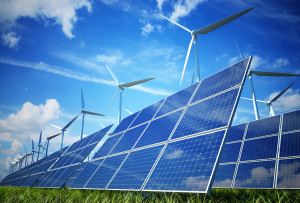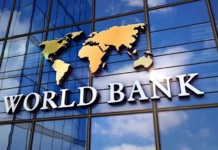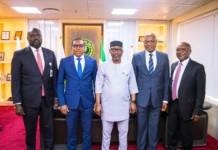While a renewable energy revolution has yet to take off in Africa, the seeds of a possible revolution are finally being sown. Large-scale wind and solar power projects are being developed in several countries and many governments now include renewable energy technologies in their power generation plans.
International financial organisations and donor groups are providing some of the funding, while the African continent is appearing on the radar for many global turbine and photovoltaic (PV) manufacturers for the first time.
Africa’s wind, geothermal, biomass and particularly solar power potential has been the subject of countless academic studies but investment had been limited until relatively recently. The only countries really to source a significant proportion of their power requirements from renewables have been Egypt and Morocco, with wind farms, and Kenya, which has led the way in developing geothermal power plants. However, two developments have really changed the sector’s prospects: the availability of international funding and South Africa’s decision to source most new generating capacity from renewable energy over the next two decades.
Wind power
The wind power sector is developing along rather different lines in Africa than in most other parts of the world. Governments usually subsidise wind farm power production through a system known as feed-in tariffs, while project size usually increases over time. Those projects that are under development in sub-Saharan Africa, however, are mostly funded externally and are surprisingly large for first incursions into the industry. For instance, in late April, the African Development Bank (AfDB) approved a €115m loan to help fund the construction of the 300 MW Lake Turkana Wind Power Project in the northwest of Kenya.
The AfDB will also provide a risk guarantee to speed up development. The project is being developed by a consortium of Kenyan and Dutch investors, while Danish manufacturer Vestas is supplying 365 turbines with a capacity of 850 kW. In addition, the government of Spain has agreed to lend $178m to fund the construction of a 428 km transmission line to connect the project to the national grid. All electricity will be sold to the Kenya Power and Lighting Company (KPLC) under a 20-year power-purchase agreement at a cost of $0.10/kWh. African wind power potential is mainly concentrated in coastal areas, including North Africa, the Horn of Africa, the Indian Ocean states and South Africa. Substantial inland potential is limited to a handful of areas, including Chad, Kenya, Lesotho and Ethiopia. At the start of 2012, 50% of Africa’s commercial wind-power generating capacity was located in Egypt, with another 40% in Morocco and 5% in Tunisia.
A total of 44 GW of new wind-power generating capacity was completed around the world last year, taking the global total to 280 GW. Just 100 MW, or 0.2% of this, was installed in Africa, mainly in Ethiopia and Tunisia.
Egypt is expected to maintain its lead in the sector, as the ministry of electricity and energy has launched a tender for a 25-year build-own-operate (BOO) contract for a 250 MW wind power scheme. A power purchase agreement with Egyptian Electricity Holding Company (EEHC) will be provided as part of the deal. Moreover, Cairo continues to guarantee access to the national grid for any new wind farms.
Solar energy
The second-most-important renewable energy technology to date is solar photovoltaic (PV). Global installed PV generating capacity is expected to increase from 100 GW at the end of 2012 to 210 GW by 2015, suggesting that the technology is quickly catching up wind power in terms of popularity.
Indeed, although it is still more expensive, PV production costs are falling more rapidly than those for wind power. Moreover, while Africa’s wind resources are concentrated in relatively few areas, the continent’s solar resources are spread across most of the continent and rank among the world’s most attractive.
Most PV generating capacity is located on very small projects, often on the roofs of buildings. However, larger schemes that utilise ground-based arrays are becoming increasingly common. For instance, the 15 MW Sheikh Zayed PV plant was completed by Masdar of the United Arab Emirates (UAE) in Mauritania in April, with $32m in funding from the UAE government. The project will increase the country’s generating capacity by 10%.
Mauritania’s President Mohammad Ould Abdul Aziz said: “This new solar power plant not only provides much-needed grid capacity for our people, it also proves that renewable energy can play a major role in the development of our country.” A combination of a long coastline and vast desert territory gives Mauritania an enviable combination of wind and solar resources.
The government of Ghana has been one of the first to introduce feed-in tariffs in Africa. Although substantial new thermal and hydro generating capacity is already under development, Accra is keen to diversify its generation mix and hopes to encourage investment in solar power capacity. UK firm Blue Energy has already announced plans to construct a 155 MW solar PV project in western Ghana, which would be easily the biggest solar power scheme in Africa. First electricity is due by the end of 2015.
One of the biggest restrictions on solar and wind power development in Africa is the need for back-up capacity. Countries with a large proportion of wind power in their generation mixes generally need spare thermal generating capacity that can be brought on stream when required. Most African states do not have sufficient total generating capacity to cope with peak demand and so they do not possess any back-up capacity.









